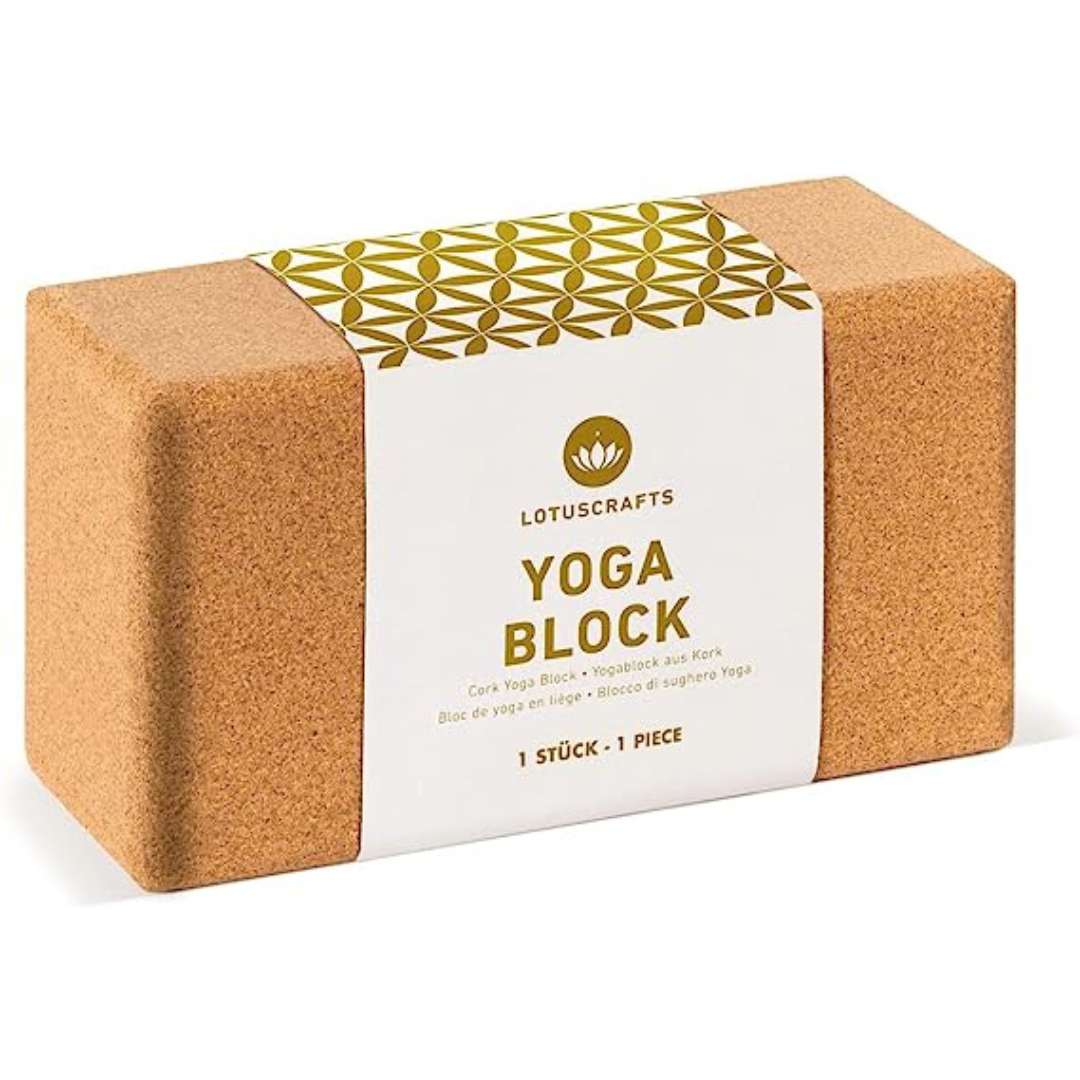Stiff back? These are officially the best yoga poses you can do to ease lower back pain
Yoga can decompress, stretch and strengthen.


Yoga for lower back pain is trending right now - and we aren't surprised. While stats on how many people suffer from low back pain vary hugely, one 2016 paper reported over 55% of women have low back pain. And, according to the World Health Organisation, low back pain is the single leading cause of disability worldwide, impacting more women than men.
So, it turns out, loads of us are looking for low back pain relief. While there are tonnes of different types of yoga, from vinyasa yoga to ashtanga yoga, the practice can definitely help ease lower back pain. The key is to avoid yoga for flexibility, where you stretch your muscles to their end range, but to use it as a way to get gentle movement into the body, says yoga instructor Puravi Joshi: "You don't have to avoid all movement when you have lower back pain. With the right approach, gentle movements, stretching, and the right exercises and yoga postures can actually help you feel better. Just remember to get advice from the pros and listen to your body along the way."
Yoga is actually so effective for easing lower back pain that a 2020 PLOS One study found it had the same effect on pain and disability physical therapy, with the added bonus that yoga is likely much cheaper than physio (although please always check with a medical professional if you have started experiencing lower back pain, especially before starting a new movement routine).
If you're looking for yoga for lower back pain, we've got you. Below, Joshi outlines all the ways yoga is so good for easing low back pain as well as imparting her wisdom on the best yoga poses to stretch and strengthen your back to help you live pain free.
This is the best yoga for lower pain, according to a top pro
Why is yoga good for lower back pain?
While lower back pain sometimes makes you feel like you need to remain strapped to the sofa, yoga can actually be really beneficial at alleviating the symptoms. One reason for that is that lower back pain is often caused as a result of stillness - you sit at your desks for long periods of time making the muscles seize up and your spine compress. The solution isn't more stillness: it's movement.
"Pain can be a scary signal from our bodies, and it's natural to be cautious and not make things worse. But you know what? In many cases, gentle movement, stretching, and suitable exercises can actually be good for your lower back and help with the recovery," says Joshi.
But other studies also show a psychological benefit to yoga for lower back pain: this 2022 paper reported that yoga works through your psychological and neurophysiologic pathways to reduce pain severity. All that calming breathing during practice has a purpose.
Celebrity news, beauty, fashion advice, and fascinating features, delivered straight to your inbox!
Of course, how yoga can help your lower back pain depends on the cause of your discomfort. "Some common causes include muscle strain, which can occur from lifting something heavy, making sudden movements or having bad posture," shares the expert.
"Another reason is issues with the discs in your spine, which act as cushions between the bones, but if they herniate or bulge they can put pressure on nerves and cause pain. As we get older, the discs can naturally degenerate, losing their ability to cushion properly, which can lead to pain and stiffness. Sometimes, the sciatic nerve in your lower back can be affected, causing sharp shooting pain that travels down your legs," says Joshi.
Weakness is also a huge reason you have lower back pain. Your abdominal muscles, back muscles and glutes are responsible for stabilising your spine and pelvis - if these are weak then they struggle to do their job and can end up painful.
"Injuries, accidents, and trauma can also lead to lower back pain. Additionally, factors like stress, anxiety, and depression can make lower back pain worse or even trigger it. Another reason that doesn’t get mentioned enough is dehydration - not drinking enough water can be a big factor to lower back pain," the expert shares.
8 ways yoga eases back pain
According to Joshi, yoga can help to ease lower back pain in the following ways:
1. Yoga eases spinal pressure
Some yoga poses, like forward bends and gentle twists, create space between your vertebrae, providing a soothing stretch and decompression of your spinal discs. This can alleviate pressure on nerves and ease your pain.
2. Yoga builds stronger core muscles
Yoga poses engage your core muscles, like those in your abdomen, pelvis, and lower back. This added strength provides better support for your spine and can help prevent or reduce lower back pain.
3. Yoga improves flexibility
Yoga asana involves postures that target the back and hip muscles. Regular practice increases flexibility, which helps release tension and ease strain on the lower back.
4. Yoga enhances blood flow
Yoga promotes better blood circulation throughout your body. Improved blood flow to the lower back area aids healing and reduces inflammation, which can contribute to the pain.
A post shared by PURAVI JOSHI | Authentic Yoga & Women’s Health Coach (@puravijoshi)
A photo posted by on
5. Yoga improves posture
Yoga encourages mindful body alignment. By practicing yoga with awareness, you can learn to align your spine correctly, reducing unnecessary stress on your lower back.
6. Yoga relieves stress
Chronic stress and tension can make lower back pain worse. Yoga incorporates relaxation techniques, deep breathing, and meditation, which can reduce stress and boost your overall well-being.
7. Yoga improves joint mobility
Gentle yoga movements enhance the mobility of your spine and surrounding joints. This increased flexibility helps reduce stiffness and discomfort in your lower back.
8. Yoga builds a mind-body connection
Yoga fosters a connection between your mind and body, improving body awareness. This helps you recognise and modify movements or positions that may trigger or worsen your lower back pain.
10 best yoga poses for lower back pain
The best pose for you will depend on the cause of your pain (whether you need to strengthen or stretch), your current flexibility levels and your mindset.
For each of Joshi's recommended poses, "remember to take a few breaths in each pose and listen to your body. If anything feels painful or off, stop and take it easy. Modify the poses if needed, and most importantly, have fun and enjoy your practice."
1. Cat-cow (Marjaryasana-Bitilasana)
What? A simple, flowing move to boost your spine's flexibility. By moving through the joints, you'll increase blood flow and synovial fluid said to ease pain.
How? Start on your hands and knees in a tabletop position. As you inhale arch your back gently pushing your spine to your belly, while looking up (cow), slowly exhale and round your spine while tucking your chin to your chest (cat).
2. Child's pose (Balasana)
What? Child's pose is one of the best-known poses in the book as it's a great, gentle stretch for your lower back.
How? From kneeling (knees can be together or wide apart) sit back on your heels, and then gently fold forward, reaching your arms out in front.
3. Downward facing dog (Adho Mukha Svanasana)
What? Another popular posture, this helps decompress your spine by working against gravity.
How? From a tabletop position, inhale and then tuck your toes under and lift your hips up high. Pressing your hands into the mat, find release and sensation in the back of your body. Bend into your knees one at a time to release tension from your hamstrings.
4. Sphinx (Salamba Bhujangasana)
What? When backbends are done properly, they can be good for stretching and strengthening your back. The key is to avoid dumping weight into your spine and instead extend and activate.
How? Lie on your belly, propped up on your forearms with your elbows directly under your shoulders and as you inhale lift your chest, keeping your pelvis down and squeezing your glutes. Focus on your lower belly to gently lift it away from the floor to support and soothe your lower back.
A post shared by Yoga Journal | Yogic Lifestyle (@yogajournal)
A photo posted by on
5. Cobra Pose (Bhujangasana)
What? Another backbend that strengthens and activates your back to soothe lower back pain while still being gentle on the body.
How? Lie on your belly, place your hands under your shoulders and as you inhale lift your chest off the floor, engaging your core and shoulder blades.
6. Bridge Pose (Setu Bandha Sarvangasana)
What? This one's a winner for strengthening your lower back, glutes, and hamstrings. Remember: lower back pain can be caused by weakness, so get stabilising and strengthening.
How? Lie on your back with your feet flat on the mat, hip distance apart and your knees bent. Press your hands and feet into the mat as you lift your hips up high. A favourite variation here is to place a block under the small of your back and let your back rest on the block, the best release for lower back pain.
A post shared by Yoga Beginner (@storyof.jane)
A photo posted by on
7. Pigeon Pose (Eka Pada Rajakapotasana)
What? All of the tissue in your body is connected, but especially those around the glutes, hips and lower back, so taking time for some hip-opening goodness helps your lower back too.
How? Start in a tabletop, bring one knee forward behind the same side wrist, and that foot towards your other side wrist, and gently extend the other leg back. Gently lower your body down over the bent leg and use your hands as a pillow or extend your arms out, feel the release through your hips and glutes.
8. Extended triangle (Trikonasana)
What? A standing pose that stretches your hamstrings and lower back.
How? Stand with your feet wide apart (wider than your shoulders). Turn your right foot out to the right, keeping your hips facing forwards. Take your arms parallel to the floor, inhale to reach your right arm forwards and exhale to release the right arm to your right ankle and your left arm in a straight line up towards the sky.
9. Thread the Needle (Supta Kapotasana)
What? This one's a gentle stretch for your whole back, shoulders and hips.
How? From a table top position, extend the right arm up towards the sky as you inhale, ensuring your hips don't move to the right. As you exhale thread the right arm underneath the left, with your right cheek touching the mat. Don't let your hips fall to the left. Your left arm can remain where it is, extend forwards or even reach around your back holding on to your right thigh. Repeat on the other side.
10. Legs-Up-the-Wall Pose (Viparita Karani)
What? This do-what-it-says-on-the-tin pose is a restorative way to ease lower back pain.
How? Lie on your back and prop your legs up against a wall or on a raised surface, keeping your hips close to the wall.
Yoga equipment to help lower back pain
Should I do yoga if my lower back hurts?
Short answer: several studies have found that yoga can help, however, if your back pain consists for more than a few weeks, it's worth booking an appointment with your local GP or a medical professional.
"Pain can be a scary signal from our bodies, and it's natural to be cautious and not make things worse. But in many cases, gentle movement, stretching, and suitable exercises can actually be good for your lower back and help with the recovery," reassures yoga instructor Puravi Joshi Joshi.
Naturally, the cause of your back pain will play a large part in whether yoga will help ease your discomfort. Causes can range from muscle strain to weakness, to trauma - even dehydration can cause aches and pains.
Bottom line: if you have any concerns, do see a medical professional an they'll be able to advise on the best course of action.

Chloe Gray is a freelance journalist who writes and talks about health, fitness, and wellbeing through a feminist lens. She was part of the launch team for Stylist magazine's fitness brand, Strong Women, and has written for i news, Women's Health, Red magazine, Good Housekeeping, Refinery29, and more. She's all about building mental and physical strength, eating delicious food that fuels you well, and making the fitness industry more accessible and enjoyable. She's also a qualified fitness trainer and research nerd, so you can be sure everything you read is backed by proper science.


